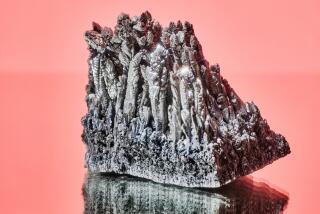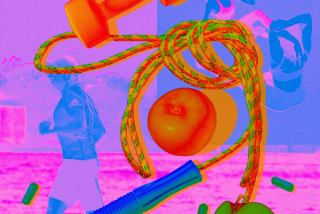In the gut, one key probiotic helps by orchestrating others
Next time you eat a tub of probiotic-enriched yogurt or pop a probiotic capsule, you can thank a strain of bacteria called Lactobacillus rhamnosus for doing more than just joining the party in your gut. A new study suggests that the single-organism probiotic behaves less like a solo customer and more like the DJ at a club, supplying the music and the banter that gets the intestines’ diverse microbial denizens up from their tables to dance together.
The result: a happy, energized and harmonious community of customers and a thriving club.
Researchers have recognized for some time that boosting Lactobacillus rhamnosus--also called LGG--in the gut can help with intestinal problems, respiratory infections and some skin disorders, and may also promote weight loss. They know that LGG adheres to the mucous membrane of the intestinal wall. But how it works has been a mystery: Whether it acts directly on the gut to improve its workings, boosts function by increasing microbial diversity, or works its magic some other way, nobody knew.
In this study, published Tuesday in the journal mBio, researchers at University of Maryland Medical School had 12 healthy subjects between the ages of 65 and 80 ingest Lactobacillus rhamnosus twice a day for 28 days. They compared the population and activity of the subjects’ gut microbiomes to see what had changed over those four weeks.
What did not change was the overall population of bacteria and other microorganisms that colonized the subjects’ guts. What did increase were the number and activity of genes in the lining of the gut that nurtured existing populations of other bacteria, including Bacteroides, Eubacterium, Faecalibacterium, Bifidobacterium and Streptococcus--all of which have benefits, including maintaining and improving immune system function.
The genes that saw an increase allowed bacterial cells to move better within their environments and to respond to other chemicals inside the gut.
Rather than acting directly on the gut or boosting the diversity of the microflora in subjects’ guts, the Lactobacillus rhamnosus “may promote interactions” between bacterial colonies in the gut and the gut itself, the authors wrote.
“This is a new idea, that some probiotics may work by affecting the overall ecosystem of the gut,” said professor Claire M. Fraser, the study’s senior author. “Previously we tended to think that LGG and other probiotics worked directly on the host.”
That suggests that scientists looking to harness the gut’s microbiome for disease prevention and treatment should look at the microbes there as an interconnected ecosystem rather than as a series of solitary bacteria, Fraser said. Modifying the behavior of microbes already in the gut may be just as important as adding any single species to this population, she added.
Follow me on Twitter @LATMelissaHealy and “like” Los Angeles Times Science & Health on Facebook.







